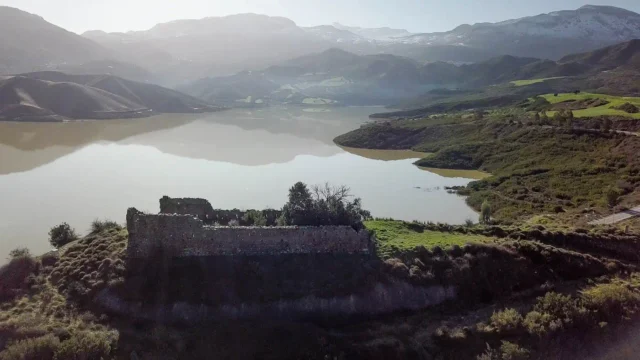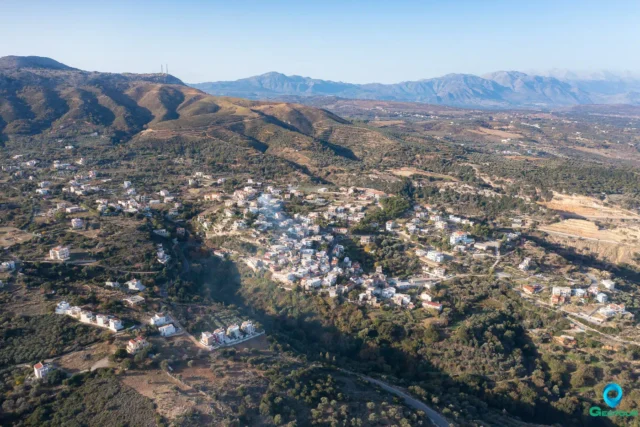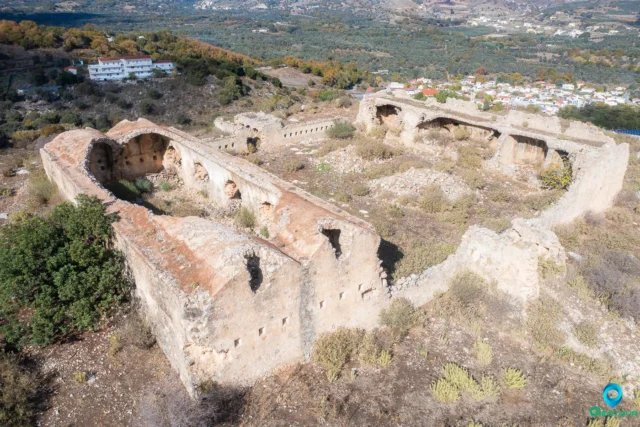

The Paleochristian Basilica at Onithe
The Paleochristian Basilica at Onithe is a significant structure that provides valuable insights into the Early Byzantine period in Crete. This basilica, dating back to the late 5th and early 6th centuries AD, stands as a testament to the enduring presence of Christianity in the region. (Platon, 1956)
Architectural Features
The basilica is a three-aisled structure with dimensions of approximately 36 x 17 meters. It is built on the slope of a hill, with the aisles arranged in a stepped fashion to follow the incline. The central aisle is the widest, while the north aisle is slightly narrower than the south aisle. The aisles were likely separated by colonnades resting on stylobates.
The entrance to the basilica is through a small portico on the south side, leading to a triple stepped platform and then to the narthex. To the west of the narthex, there may have been an atrium, accessible through a door at the south end of the narthex.
The eastern end of the basilica culminates in a semicircular apse, equipped with a synthronon (a semicircular arrangement of steps behind the altar intended for bishops attending the liturgy). The areas flanking the sanctuary may have served as pastophoria, with the north one possibly used as the Prothesis (where the Holy Gifts were placed before the celebration of the Eucharist) and the south one as the Diakonikon (where vestments and sacred vessels were kept).
The north extension of the narthex contains compartments of uncertain use. The large room, connected to the narthex by a door, may have been a baptistery. The easternmost room is a narrow passage communicating with the north aisle.
Mosaics and Other Finds
The floors of the basilica in the central sanctuary, the north pastophorium, the central aisle, and the narthex were covered with mosaics. In contrast, the floors of the side aisles were made of bricks and stones.
Unfortunately, the main architectural elements and columns of the basilica have been lost, as has the entire sculptural decoration. Only a few pieces of porous stone latticework, of provincial workmanship, have survived. Other finds include a small amount of pottery and fragments of glass lamps.
Later Modifications
In a later period, after the basilica had ceased to function, a small chapel was built, destroying part of the sanctuary and apse. At its entrance, a hole was discovered containing a few pottery shards and a vial, possibly the consecration deposit of the basilica.
Significance and Connection to Onithe
The Paleochristian Basilica at Onithe is a crucial piece of the site’s history. Its presence indicates that Onithe continued to be inhabited and was a center of religious activity during the Early Byzantine period. The basilica’s sophisticated architecture and mosaics suggest a degree of prosperity and cultural development in the city during this time. Furthermore, the basilica’s later conversion into a chapel demonstrates the site’s continued use over time.
The basilica’s location within the archaeological site of Onithe enriches our understanding of the site’s complex history and its role as a long-lasting settlement in the region of Rethymno.
References:
- K. Psaroudakis, Archaiologia Online
- N. Platon, 1956, ‘Excavation at Onithe Gouledianon, Rethymno,’ Praktika tis Archaiologikis Etaireias, pp. 378-382.
Access
It is fenced but you can approach next to it.




































There are no comments yet.